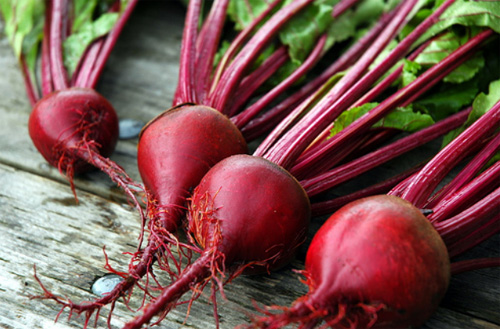 |
| Purple Bumble Bee variety |
Like last week's run through of our different heirloom tomatoes, this week the cherry tomatoes are up for a roster check. Many of our cherry tomato plants are over 7 feet tall and they're not done growing yet! Although the temps for this week will be in the more comfortable range, we'll still be reaping the benefits of last week's heat in our tomato fields. As you pick your way through our delicious jungle, keep an eye out for these varieties.
Sungold--This year there are ample amounts of these round, bright orange bursts of sugar. They've been called a one-trick pony because their sugar content (or Brix levels) is their only selling point, but I grow cherry tomatoes mostly for the sugar rush, so it's really the only trick I want them to do. The major defect of the Sungolds is that they split sooooo easily, making a gooey mess if you picked them first into the bottom of your quart basket. Best to top off your basket with these so they're not squished by the weight of the others. These little guys are prolific on huge plants (easily the largest plants the farm will grow all year), making the Sungold sections of the cherry tomatoes the most jungle-like.
Esterina-- Yellow and almost as sweet as their Sungold neighbors, the Esterinas are blocky in shape--somewhere between round and square--and a little larger. I discovered this variety by accident last year (I thought I had planted a small, red, round variety and this was definitely not that) and fell in love. If I wasn't so addicted to the sugar shot of the Sungolds, this would be my favorite variety. Esterinas have a firmer, meatier texture, plenty of sweetness, and rarely crack or split.
Jasper--The only red cherry tomato out there is this guy--small, slightly olive-shaped, a beautiful deep red, and very tasty. This plant has been bred with some resistance to the bogeyman of tomato diseases, Late Blight (
Phytophthera infestans), so it should be the last variety standing this year, once the disease moves in towards the end of the month.
Black Cherry--Large, round, dusky, and super juicy, these plump purple beauties pop in your mouth like a grape. Try one and you'll come over to the dark side too!
The Bumble Bees--Pink, Purple, and Sunrise. A new variety from my favorite seed supplier (Johnny's Seeds in Maine), these striped bi-color cherries are big and round. Don't be fooled into thinking they're not ripe just because of the green stripes. Not only are they visually very striking, they have a good balance of sweet and tangy tomato flavor.
Yellow Pear-- yellow and pear-shaped (surprise!). These reach their peak flavor at the end of September, when other varieties start to fade. Their shape adds curb appeal to the mix while they wait for their ugly duckling moment to shine.
 |
| another massive Striped German heirloom |
A couple of reminders--if you have any of our pint, half pint, or quart containers kicking around in your kitchen, please bring them back and we will reuse them! Our next Farm Fresh Yoga class with Maureen St. Croix is next Saturday, 9/20, at 11am--Sun salutations on the farm! Practice your downward dog with our new puppy Woody and the Oreo cows! And then relax in Savasana and listen to the wind blow across the fields--what could be better than that?? In your share this week: more tomatoes! Red slicers, orange slicers and heirlooms of all colors to choose from; Husk cherries, purple potatoes from Moraine Farm, a basket of fresh onions (perfect for kebabs!), another big bunch of PYO flowers and 3 more quarts of PYO cherry tomatoes!
Recipe of the Week
For your cherry tomato bounty this week, a recommendation from CSA member Eileen Small--another great recipe from Ree Drummond of the Pioneer Woman blog. Worth turning on your oven for!
Cherry Tomato Tart
Ree Drummond at the pioneerwoman.com
Per usual, Ree takes you through the recipe with great step-by-step instructions and fabulous photos--click the link for some grade A food porn.
4 Tablespoons Butter
2 whole Large Onions, halved and sliced thin
Salt And Pepper, to taste
2 whole Store-bought Pie Crusts (or 1 good sized homemade crust)
1-1/2 cup Grated Fontina Cheese (or Monterey Jack)
1/4 cup Grated Parmesan
1/4 cup Grated Gruyere (or Swiss)
3 cups Cherry Tomatoes (yellow or red), washed and dried (more if needed)
1 whole Egg
1/4 cup Milk
16 whole Basil Leaves, Chiffonade (more if needed)
Heat a large skillet over medium-low heat. Add the butter, onions, salt, and pepper and cook for 20 to 25 minutes, stirring occasionally, until the onions are soft and deep golden brown. Set aside.
Preheat the oven to 450 F.
Smush both pie crusts into a ball, knead it around a bit to combine them, then roll it out into one large, thin crust. Lay onto a shallow quarter sheet pan, a tart pan, or cut in half and use 2 standard pie pans. Sprinkle on the cheeses in a single layer, then lay on the caramelized onions, then sprinkle the tomatoes over the cheese.
Mix together the egg and milk in a small bowl and brush it all over the crust around the edge of the tart. Bake the tart for 15 to 18 minutes, watching carefully to make sure the crust doesn't burn. (The tomatoes should be starting to burst apart, with some dark/roasted areas on the skin, and the crust should be deep golden brown.) If the crust is getting brown too fast, reduce the heat to 425 F.
Remove the tart from the oven and allow it to sit for 5 minutes. Sprinkle the basil all over the top. Cut into squares and serve!
Enjoy!
 |
2014 Farm Crew at the Farm to Table this weekend:
Joe, Rory, Casey & Sophie |
















